My visual representation of my degree in Music and Sound Design focuses on the infinite, intersectionality’s of technical and artistic disciplines that go into constructing a live music performance. Before studying this degree my knowledge of the constructs of live music performance were limited to my prior employment as a gig photographer for The Music magazine. Using my own images adheres to ethical concerns and will ensure I am not tampering with someone else’s copyrighted work. In the digital reproductive environment of Pixlr allowed me to consider different aspects of my photographs (Hall 1999, pp. 135).
Iteration Number One.
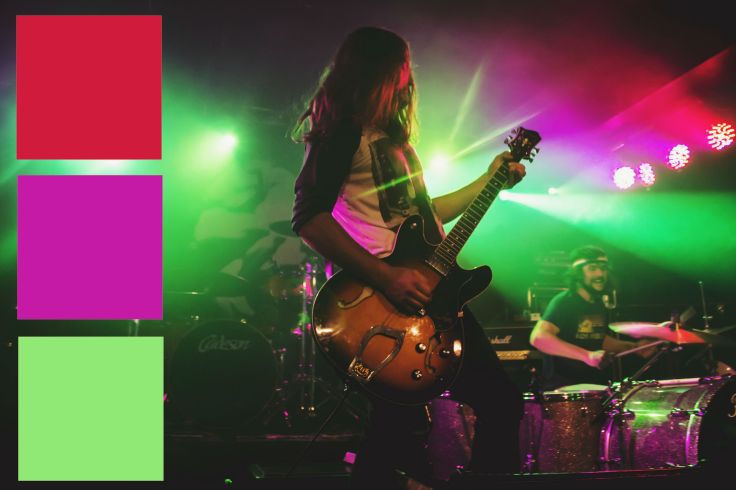
My first image experimentation involved me exploring the colour elements that make up the images I took as a live music photographer. I was mainly interested in the lighting elements for this image as I wanted to use a consistent colour theme that paralleled the lighting scheme within the images.
In Pixlr I utilized the colour selection tool to pick three colours from the lighting that made up the live music image. I then made three square panels of to the left margin of the image with the drawing tool to fill colour them with. The theme of the three panels on the left margin of the image was utilised in my final image as a framing technique for displaying symbols. As Hall (1999, pp. 134) puts the “indexicality of a photographic image” allows reconsideration of its embedded meaning. This photo’s original meaning I took for journalistic reasons, and now I am focused on the colour scheme manifest in the lighting of live music performances.
Iteration Number Two.
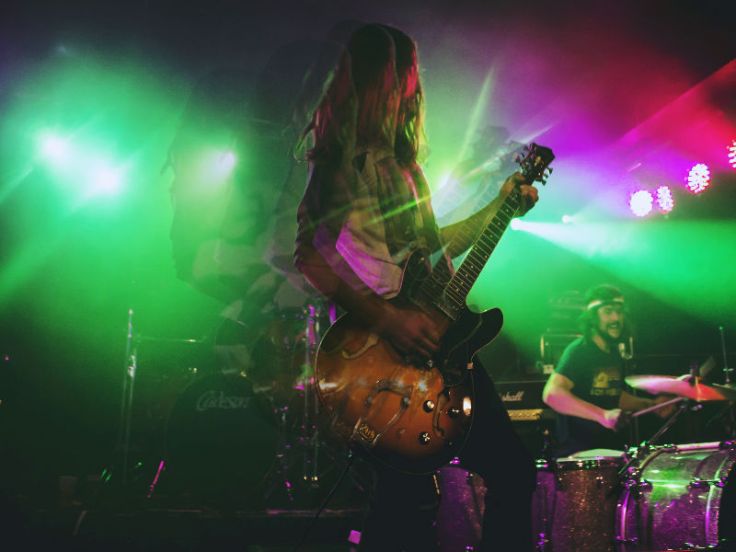
For my second iteration, I sought out inspiration from the famous music photographer Graham Keen. Especially focusing on his photography of the Pink Floyd concert at Notting Hill, London in 1996. Keen uses long shutter speeds to capture motion blur making the artist’s movements coincide beautifully with the lighting creating a singular, fluid image that effectively captures the energy of the performance. This inspired me to utilise Pixlr to manipulate my photos to give them the feeling of motion blur to emphasise the movement and energy of the musician in relation to the lighting aspects of their performance. I am taking up the role of the ‘possessive spectator’ (Sassatelli 2011, pp. 125) materializing my experience of the energetic gig through digital reproduction.
The process I undertook to alter this photo started off with me using the Polygonal Lasso tool to crop out the guitarist. I then copied and pasted the cropped image four times onto separate layers. I placed the cropped layers to the left of the musician and turned down the opacity and added a blur effect. As Mulvey puts, ‘The arrival of the digital has produced a new relationship between representation and reality, which tends to underline the boundaries between what is moving and what is motionless’ (Sassatelli 2011, pp. 125).
Iteration Number Three.
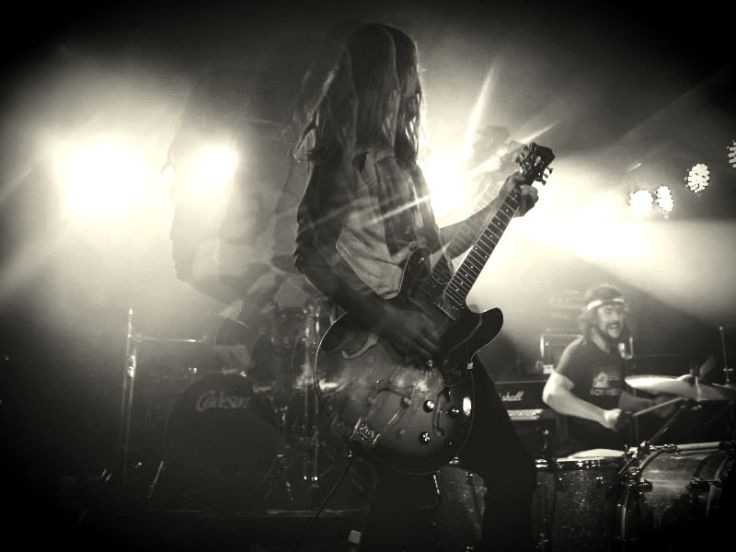
Hall’s (1999) reading directed my attention to the 1930s photography of Edward Steichen. What I found compelling about his photographs is his prominent use of lighting in emphasising light and shadow. It is an integral part of his photography with some photographs even featuring lighting props, which inspired me to perhaps display images of the props that create a live music performance in my final image.
The digital reproduction of this image on Pixlr was quite simple. I desaturated the image and then turned up the contrast a little, added an old photo filter to give the same vintage, warm tonality Steichen has and added a vignette to further emphasise the old fashioned, black and white, romanticised vibe. I found this version interesting as the expression and movement of the artist became more salient as opposed to the aesthetically colourful nature of the previous photo.
Iteration Number Four.
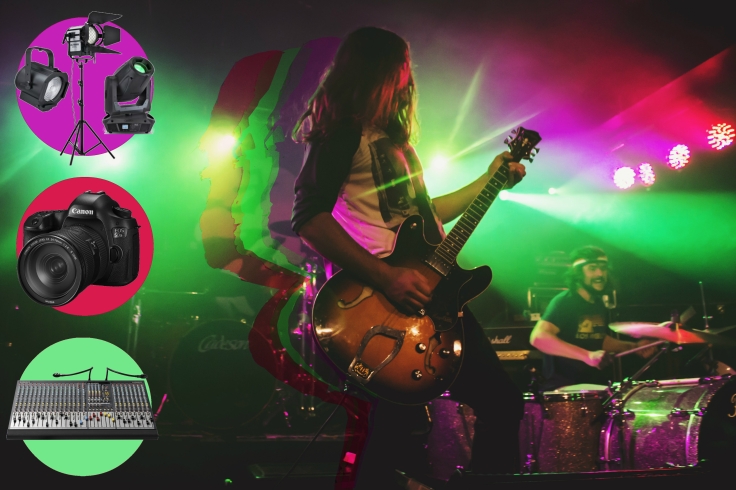
The fourth iteration contributed to the final construct of my image. I decided upon using the image of Jackson Firebird guitarist as my main image. I chose a center to margin reading to show the artist as the central purpose of the performance, “Dominant centre flanked by relatively polarised elements.” (Kress et al. pp. 206) and the most salient aspect of the image.
Taking from my first iteration I used panels off to the left of the image to crop images symbolising sound engineering, lighting and photography. This framing element (Kress et al. pp. 182) signifies these symbols as separate from the image.
Following the theme from my second iteration I decided to create motion blur that aligns with the colour scheme of the lighting in the image. To do this I cropped the guitarist in the same manner as the second iteration but instead I fill coloured him with the colours I’d selected from the background lighting with the colour selector tool. I then selected the overlay option to blend it effectively with the rest of the image.
Final Iteration.
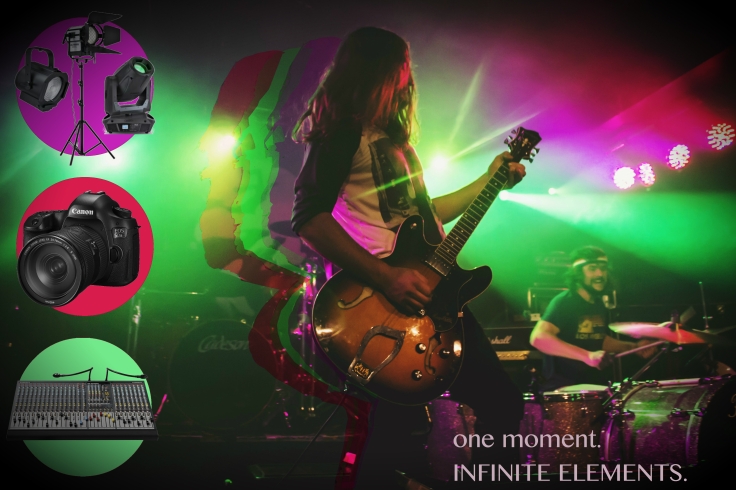
I did not need to manipulate my final image photo a lot more as I was content with how it communicates my concept of the unification of technological elements in the construction of live music performance. I simply added a logo that says, “One Moment, Infinite Elements”, meaning obviously that the moment being the one captured within the photo and the infinite elements being the technologies discussed. I added a vignette around the photo to frame all the elements as one within the photo and further focusing the punctum of the image to the centre.
Conclusion:
Being digitally literate means being critical, analytical and understanding of communication medias. Especially in a ‘read-write’ (Hartley 2009, pp. 16-17) era as a live music photographer a consciousness of the different technologies that make up a scene is important in ensuring effective communication. Understanding how to read visual images enables me to be able to communicate effectively through my own.
I am pleased with the final product of my image. I think it effectively conveys the notion of different elements that are required to construct a live music performance and communicates a higher sense of appreciation of live music to the consumer. The photo I have taken is one of my own which I had the permission of a media pass to take photo of the artist in the venue at the gig and all other images and ideas are referenced.
References:
Hall. D, 1999, ‘The Original and the Reproduction: Art in the Age of Digital Technology’, Visual Resources, vol. 15, no. 2, pp. 269- 278.
Kress, G. & Leeuween, T. 1996, ‘The meaning of composition’, Reading Images: The Grammar of Visual Design, Routledge, London, pp. 188 – 229.
Sassatelli, R. 2011, ‘Interview with Laura Mulvey. Gender, Gaze and Technology in Film Culture’, Theory, Culture & Society, SAGE, vol. 28, no. 5, pp. 123- 143.
Hartley, J (2009): “Repurposing Literacy”, in The Uses of Digital Literacy, Queensland University Press, Qld, pp.1-38.
Among all the Wildflowers 2017, Pink Floyd at All Saints Hall, Notting Hill, London, October 1966, Tumblr post, viewed 3 October, 2017, <http://among-all-the-wildflowers.tumblr.com/post/159375513704/more-relics-pink-floyd-at-all-saints-hall>>
Canon Australia. n.d, EOS 5DsR, viewed 8 October 2017, <https://www.canon.com.au/cameras/eos-5dsr>
StageSuperstore. n.d, Allen & Heath GL2400 4 Buss Live Sound Mixing Desk, viewed 8 October 2017, <https://www.stagesuperstore.co.uk/allen–heath-gl2400-4-buss-live-sound-mixing-desk-1190-p.asp>
Tidridge, M. n.d, 3D Stage Lights Turbo Squid, Pintrest, viewed 8 October 2017, <https://au.pinterest.com/pin/388154061612921217/>
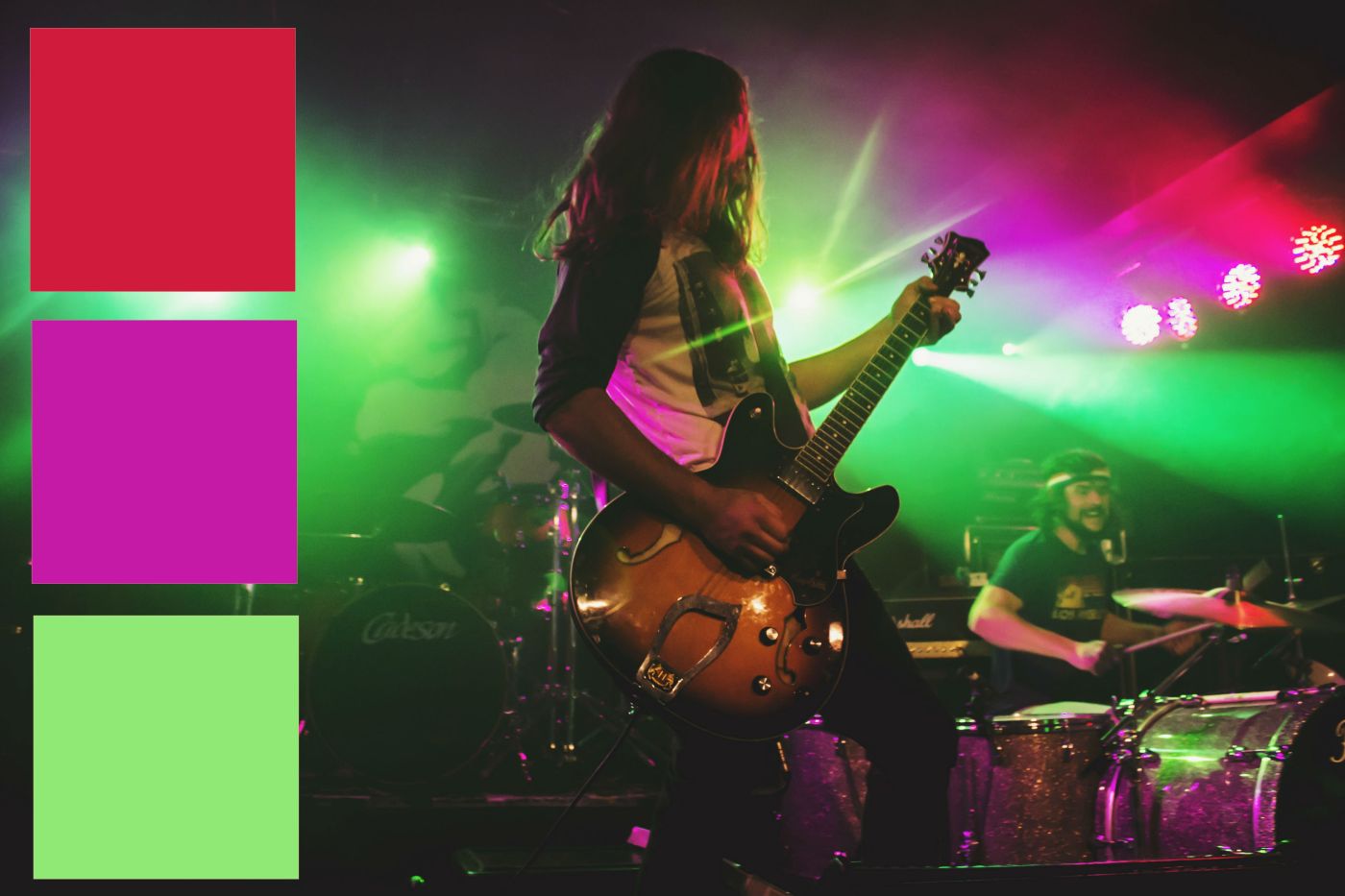
Leave a comment